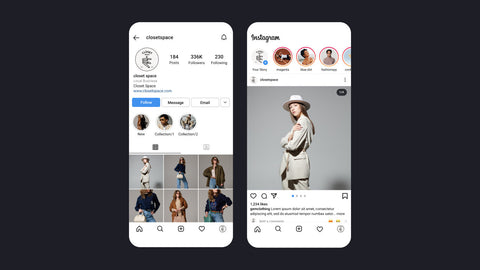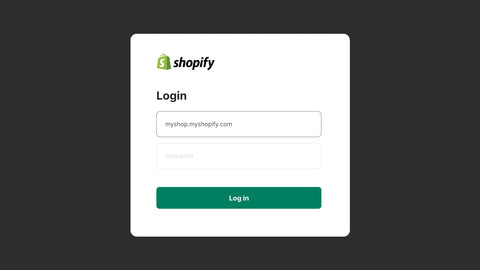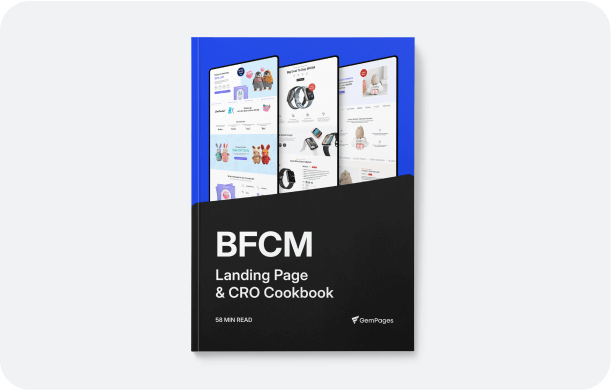- What is a Shopify Subscription Business Model?
- Pros and Cons of Shopify Subscription Business Model
- Types of Subscription Box Services
- What Are The Most Popular Shopify Subscription Products?
- How to Start a Shopify Subscription Box Business?
- What Makes a Top-notch Shopify Subscription Business?
- 3 Examples of Successful Shopify Subscription Box Businesses
- Wrapping Up
- FAQs about Shopify Subscription Box
How to Start a Shopify Subscription Box Business in 5 Easy Steps
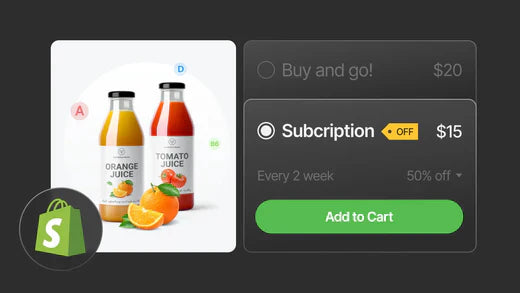
Every entrepreneur in the world loves to see repeat customers!
The reason is quite simple - repeat customers give you more and more business with no customer acquisition cost. It’s free!
In other words, it’s more revenue and profits without spending on paid ads. And perhaps, that’s one of the primary reasons you’re looking to start a Shopify subscription box business.
Or maybe it’s the recurring payments that have attracted you toward this business model.
Well, whatever could be your reason to sell subscriptions on Shopify, just know that you’re in the right direction and at the right place.
In this blog post, we’ll help you with the essential details you need to know for starting your subscription business with Shopify - including the pros and cons, subscription business models, step-by-step guide, and so on.
Learn more: 11+ Best Shopify Subscription Apps to Get More Sales
What is a Shopify Subscription Business Model?
In general, a subscription business model involves selling products or services to customers on a regular basis in exchange for recurring payments.
Historically, this model was predominantly used by gyms, magazines, software companies, and service providers. Notable examples include Netflix and Spotify, which have become household names.
But then came the new player in the game – the subscription box business model!
This business model revolutionized the subscription concept by applying it in product-based businesses, offering customers recurring deliveries of physical goods. Examples of subscription box ideas include food, coffee, personal care, and beauty products.
Successful businesses utilizing this model include Blue Apron and HelloFresh (meal kits), Dollar Shave Club (grooming products), IPSY (beauty products), and Stitch Fix (clothing). Importantly, this model is versatile; nearly any type of business can adopt the subscription model with the right strategy.

Pros and Cons of Shopify Subscription Business Model
Before starting any new business, it is essential to thoroughly analyze all potential advantages and disadvantages. Here are some pros and cons of the subscription box business model.
Pros of Shopify Subscription Boxes
-
Predictable Revenue Stream: Subscriptions ensure a steady and predictable income, making it easier to forecast sales and manage cash flow.
Tip: Offer multiple subscription plans (monthly, quarterly, annually) to cater to different customer preferences and stabilize cash flow.
-
Customer Loyalty: Regular deliveries create a strong bond with customers, increasing retention and reducing churn rates.
Tip: Personalize the customer experience by including customized notes, samples, or surprise gifts in the boxes.
-
Marketing Opportunities: Subscription boxes offer unique marketing opportunities, such as unboxing experiences and social media engagement.
Tip: Encourage customers to share their unboxing experiences on social media by creating a branded hashtag and running contests or giveaways.
-
Upselling Potential: With recurring shipments, there are ample opportunities to upsell additional products or premium services.
Tip: Include promotional flyers or discount codes for other products in the subscription boxes.
-
Market Expansion: The model allows businesses to reach a broader audience by offering niche and customized products.
Tip: Conduct market research to identify niche markets and tailor your subscription boxes to meet specific customer needs.
Cons of Shopify Subscription Boxes
Like any other business model, a subscription business model too can have certain challenges.
-
High Initial Costs and Inventory Management: Setting up a subscription box service can require significant upfront investment in inventory, packaging, and logistics.
Tip: Start with a small, manageable inventory and scale up as your subscriber base grows. Negotiate bulk discounts with suppliers to reduce initial costs. Use data analytics to predict trends and adjust inventory orders accordingly.
-
Customer Acquisition: While retention rates can be high, acquiring new subscribers often requires substantial marketing efforts and incentives.
Tip: Offer attractive sign-up discounts or trial periods to entice new subscribers. Leverage social media advertising and content marketing to reach a wider audience.
-
Churn Risk: Subscribers can cancel at any time, and managing churn effectively is crucial to maintaining profitability.
Tip: Regularly engage with your subscribers through surveys and feedback forms to address their concerns and improve your service. Implement loyalty programs or incentives for long-term subscribers to reduce churn rates.
-
Complex Logistics: Coordinating regular deliveries, handling returns, and ensuring timely shipments add layers of complexity to the business operations.
Tip: Partner with reliable logistics and fulfillment services to streamline operations and ensure timely deliveries.
Types of Subscription Box Services
1. Replenishment subscription business
This model offers regular deliveries of frequently replenished consumable products, charging customers on a set date and delivering as scheduled. Suitable products include groceries, pet food, personal care items, vitamins, and sanitary products.
Interesting note: The average spent on groceries per week is $120 and the average time spent on grocery shopping is 41 minutes, making it worth trying in this niche.
Unique Advantages:
- Consistent Revenue Stream: Regular, predictable income due to ongoing need for consumable products.
- Customer Convenience: Eliminates the hassle of reordering, creating a seamless customer experience.
- High Customer Lifetime Value: Customers tend to stick with services that provide essential products.
Tailoring to Business Needs and Preferences:
- Customization Options: Allow customers to modify delivery frequency and quantities based on their usage.
- Bundling: Offer bundles of related products for added value.
- Personalization: Use data analytics to recommend products based on previous purchases.
2. Curation subscription business
As the name suggests, the curation business model focuses on delivering products that are curated or personalized based on a theme or customer preferences. For this business model, more suitable products would be the ones that have a higher potential for customization or to provide novelty on a regular basis.
Thus, clothing, apparel, beauty, and food products can do well under this model.
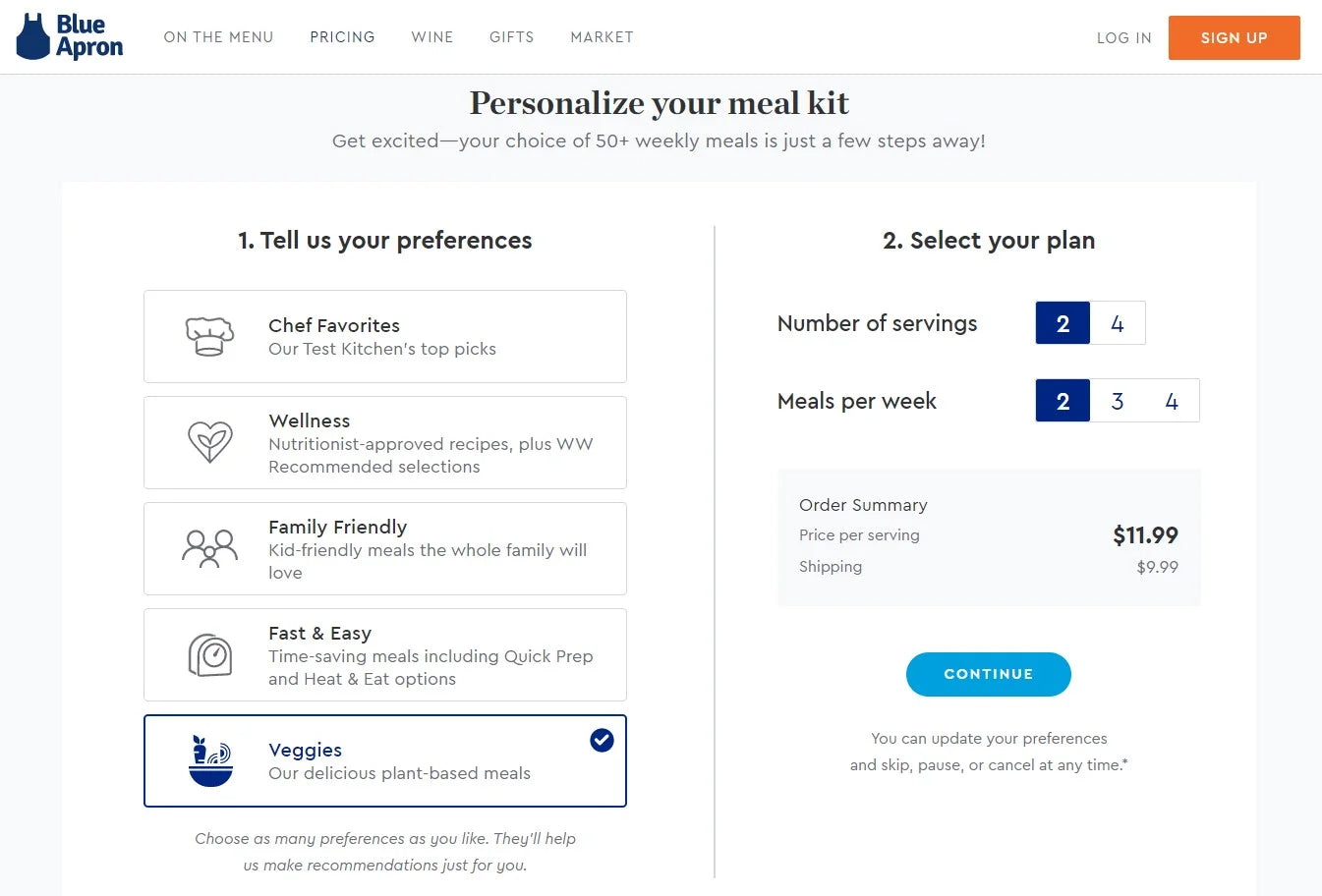
Blue Apron – a meal delivery service – gives meal preferences to their customers that can be updated at any time.
Unique Advantages:
- Discovery and Delight: Customers enjoy the excitement of discovering new, curated products tailored to their tastes.
- Brand Loyalty: High engagement due to personalized and thematic curation.
- Differentiation: Stand out in the market by offering unique and niche products.
Tailoring to Business Needs and Preferences:
- Customer Profiles: Use surveys or quizzes to gather preferences and personalize the offerings.
- Themed Boxes: Create boxes around specific themes or seasons to keep the experience fresh and exciting.
- Feedback Loops: Collect feedback on curated items to refine future selections.
3. Access subscription business
The access subscription model, popular in software and online streaming, is also used by product-based businesses. Customers pay a monthly or annual fee for benefits like discounts, free shipping, or early product access. This model suits businesses with frequent buyers, offering exclusive perks to encourage repeat purchases

NatureBox gives its members a sense of exclusivity by offering special discounted prices at 20% to 40% off.
Unique Advantages:
- Exclusive Content: Provides value through unique content or services not available elsewhere.
- Loyalty and Retention: High retention due to perceived exclusive value.
- Scalable: Easily scalable without the need for physical products.
Tailoring to Business Needs and Preferences:
- Tiered Memberships: Offer different levels of access with varying benefits.
- Special Events: Host exclusive events or webinars for members.
- Regular Updates: Continually add new content or features to maintain interest.
4. Education and Training Subscription Model
Education and Training Subscription Model offers learners access to educational content and resources for a recurring fee. Subscribers benefit from regular updates, exclusive materials, and ongoing support, making it ideal for continuous learning and skill development.
Unique Advantages:
- Continuous Learning: Subscribers value ongoing education and skill developme
- Expertise Showcase: Positions the business as an authority in the industry.
- Scalable Content Delivery: Digital nature allows for easy scaling.
Tailoring to Business Needs and Preferences:
- Personalized Learning Paths: Customize content based on user progress and preferences.
- Interactive Elements: Include quizzes, assignments, and community forums.
- Certification: Offer certificates or badges upon course completion to add value.
What Are The Most Popular Shopify Subscription Products?
Now that you know the ins and outs of Shopify subscription box business, let’s explore some different subscription product ideas that might help to create your new subscription offering (and revenue stream) for your store.
Below are the most popular Shopify subscription product ideas :
- Beauty Products: Skincare items, cruelty-free beauty products, make-up items.
- Food and Drink: Organic snacks, paleo snacks, vegan food, healthy dressings, sauces, and marinades, and many more.
- Stationery: Journals and notebooks, scrapbooking material, postcards, etcetera.
- Accessories: Jewelry, T-shirts, tote bags, nail art kits, etcetera.
- Pet Supplies: Treats, pet toys, pet care products, and clothes.

Bokksu is a Japanese subscription-based single product store
How to Start a Shopify Subscription Box Business?
If you are new to Shopify or wondering how to sell subscriptions on Shopify, we’re here to help you with the step-by-step guide that includes some of the best practices that every new store owner should take care of.
Step 1: Finalize Your Business Idea
Before you start your subscription box business, you need to lay a solid foundation.
By the way, if you already have a business set up and you just want to implement a subscription business model, you may skip this step. But if that’s not the case, it’s crucial to take care of some of the fundamentals, such as research and testing, especially when you’re looking to start a product-based business.
Finalize the niche and products: Brainstorm and identify what you want to sell and who will be your target customers.
Market Research: Use Google trends to analyze the potential demand for your product. You can even perform research on platforms like Amazon and Etsy.
Competitor Research: Check out who all are your competitors in the market and know their strengths and weaknesses.
Test your product: If you’re going to use a third-party supplier, order the product for yourself. Send your products to some friends or family members and get their feedback.
Brand Name: Choose a great brand name and make sure the domain name is available. (You can buy the domain name from Shopify or a third-party provider as you wish.) It’s also advisable to create your social media accounts with the same name across all platforms.
Step 2: Prepare Subscription Box Business Plan
This step is your opportunity to create a ‘Unique Selling Point’ (USP) for your business.
If you want your business to stand out in the market, your business needs to have a USP. During the research stage, you may check out different brands and their subscription plans to get an idea or inspiration but make sure that you come up with your own unique idea.
Here are the key aspects that you need to consider in your strategy:
Finalize the subscription model: Decide on which subscription model you want to adapt. This may depend on what products you want to sell and the ideal frequency at which customers require those products.
Decide on the product pricing: Not all customers would become your subscribers immediately. Some may want to try it out first and then go for a subscription. So, it’s advisable to decide and set the pricing for individual products as well as for the subscription box.
Prepare the plans/packages: Decide on how you want to package the benefits with the subscription plan. So, this may include things like:
- Whether to keep a single package or offer different packages based on the frequency or tiers of membership.
- What would be included in a package – just the products or other benefits as well? For example, products + free shipping or other benefits.
How to Do Free Shiping on Shopify? (+Evergreen Tips)
How does Shopify Shipping work: Easy Set-Up Guide, Tips and Tricks (2023)
Step 3: Create and Build Your Shopify Store
Important update: From February 2024, The "$1 per month for the first 3 months" offer is no longer available. Instead, you can still explore Shopify with the new deal: Get 3 days free then first month for $1.
Since Shopify offers an undeniable offer, you should ensure that you make the most out of it. So first, complete all the planning and strategy tasks and then proceed with your Shopify store creation step.
Learn more: Shopify Tutorial: Everything For Success [2024]
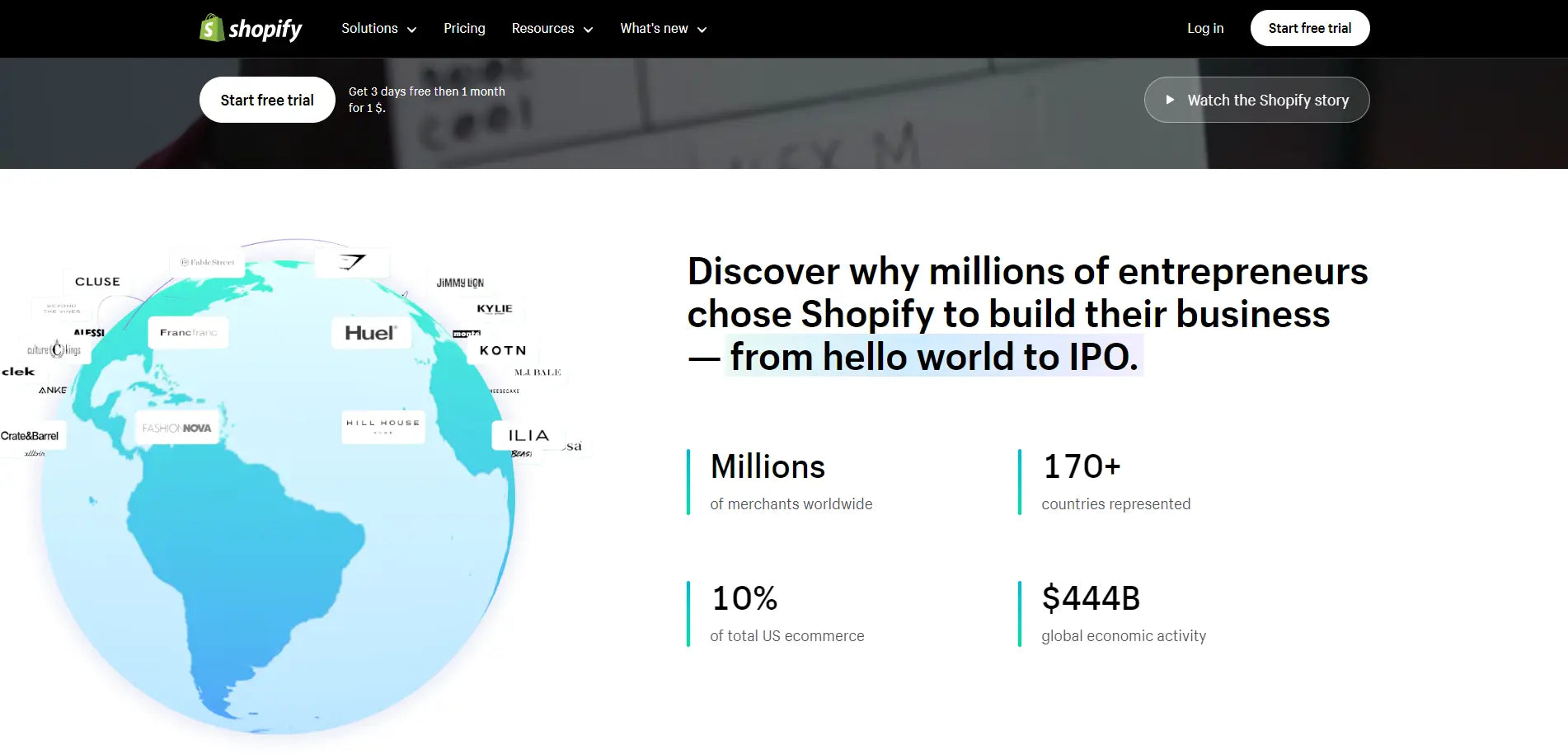
Shopify’s 3-day free trial lets you start building your store and get familiar with the platform

3.1 Choose a Theme and Customize Your Store
For any online business, website design is a huge part of its brand identity. Thus, customizing your store is one of the most crucial parts of the entire store building process.
There are two ways you can customize your Shopify theme:
A. Customize your store using the built-in theme editor
B. Use GemPages page builder app to customize your store
With GemPages, you get complete flexibility to customize your store with the drag-and-drop editor. So, you can custom build your own home page, collection pages, product pages, landing pages–to enhance the look and feel of your store pages.
We have a complete guide here to help you in detail on this topic: How to Build Custom Shopify Pages That Sell. Also, one more additional benefit of building your store with GemPages is that you get a template that is designed specifically for the subscription business model.

GemPages has a huge library of templates to help Shopify store owners build their website quickly and easily
3.2 Set up products and collections
When it comes to setting up products and collections in your Shopify store, there are some critical aspects that you should take care of.
For example, you need to ensure that product listing is done in a way that is SEO-friendly. Also, if your store has multiple categories of items, creating different collections can make navigation and search easier for your customers. While all these may seem like a quite daunting task, we’ve got you covered with this step as well.
Learn more: How to Add Products to Shopify in Five Easy Steps
Shopify Collections: A Complete Guide (2022)
3.3 Install Subscription and Other Necessary Apps
To manage your subscriptions and Shopify recurring payments, you need to install a subscription app on your store. Since there are many subscription apps in the Shopify app store, we’ll provide you with some recommendations to make this step easier for you.
Apart from the page builder and subscription app, there are some other apps that can be helpful to almost any type of business. For example, there are Shopify apps that can help you increase your sales with different strategies such as email marketing, upsell and cross-sell, loyalty program, product reviews, etcetera.
3.4 Create Subscription Plan
Using your subscription app, you can create your subscription plan with specific products that you want to offer as a part of the subscription box. This process may vary depending on the subscription app that you choose.
For example, one of the popular subscriptions apps–Appstle Subscriptions–lets your create three kinds of plans:
1. Pay As You Go, 2. Prepaid One-time Plan, and 3. Prepaid Auto-renew plan

You can create and manage subscriptions from Appstle Subscriptions dashboard in your Shopify admin
3.5 Configure All Shopify Settings
Make sure that all settings are properly configured, especially payments, checkout and accounts, shipping and delivery, taxes and duties, and notifications. Those are some very critical settings for your Shopify store.
Step 4: Create a Robust Subscription Policy
For any business, having precise and clear documentation of the policies is a vital part of the business. It provides clarity and transparency to your customers and also protects your business from a legal standpoint.
If you go to the Shopify admin > Settings > Policies, you’ll find various store policies such as Refund policy, Privacy policy, Terms of service, Shipping policy, and Contact information. For most of these policies, Shopify provides templates that you can customize based on your business.
It’s advisable that you consider all different aspects and possible scenarios of your subscription business and include the policy or terms in your store policies wherever applicable. Also, you can create an additional page dedicated to your subscription policy. You may seek help from a legal writer who has expertise on the subject.
Step 5: Launch and Promote Your Business
Once you have everything set up, it’s time to launch your store. After putting in all the hard work and efforts to build your online store, launching it gives you a sense of accomplishment. But remember that the job is not done yet.
Building and growing your business is an ongoing process that never ends.
Post launch, the first thing that you need to ensure is that you raise your brand awareness and get those potential customers to visit your store. Make sure that you have submitted your sitemap to Google Search Console and you have other important tools to analyze your store’s traffic. For example, free tools like Google Analytics and PageSpeed Insights could be very helpful to you.
What Makes a Top-notch Shopify Subscription Business?
Looking at the ever-growing opportunities in the subscription business economy, competition is bound to be there. But what’s important is how you stand out from the competition.
Here are some of the actionable tips that you can start implementing in your business right out of the gate:
Use Marketing Strategy Based on Your Target Customers
In this digital age, there are endless marketing options. It’s crucial that you pick the right marketing strategy and focus on the channel that’s most close to your target audience.
For example, if you’re selling beauty products and your target customers are mostly youngsters, influencer marketing and Instagram could be great options for you. You can also send your subscription box to a few influencers for them to create and share unboxing videos.
Helpful article: Learn about Shopify Collabs: What Is It and How Do You Use It?
Create a Solid Landing Page Explaining The Benefits
In simple terms, a landing page is a dedicated web page where your potential customers land after clicking on a link or call to action (CTA). So, if you want to take your subscription offer to the next level, you should present it with a compelling landing page that explains how your customers would be benefitted from your subscription offer.
To create appealing and high-converting landing pages, once again, you can use GemPages. GemPages has a huge library of templates that you can easily customize to match your branding.
Surprise Your Customers with Occasional Gifts
So, we discussed earlier in this blog post that coming up with novelty in your products could be a challenging aspect. But you don’t have to always come up with new products. Sometimes, sending your customers a small gift as a gesture of gratitude can give them an unexpected joy and smile on their face.
Will it cost you a little extra? Yes. But will it help you build a better relationship with your customers? A big time YES. In fact, little things like these go a long way.
Build an Engaging Community around Your Customers
Building community is one of the most powerful ways to boost engagement and loyalty amongst your customers. Also, it provides you great insights about the customer needs and helps you to come up with new ideas for your subscription box offers.
Your loyal community members are like your brand ambassadors. And one of the biggest advantages of building a community around customers is word-of-mouth marketing. According to Semrush, word-of-mouth contributes $6 trillion in annual worldwide spending and is responsible for nearly 13% of all sales.
Read more about Strategies to Increase Your eCommerce Subscription Sales
3 Examples of Successful Shopify Subscription Box Businesses
1. Joshua Tree Coffee

Joshua Tree Coffee’s subscription plans provide exclusive offers and immediate savings to its customers.
Joshua Tree Coffee Company is a great example to start with (because I know, entrepreneurs love coffee). The first thing that you may notice on its website is the awesome look and feel of the home page. In fact, the entire website is beautifully designed with fresh and clean look.
The company’s primary mission is to produce and sell premium organic coffee that can help protect farmers and the environment. With over 3800 reviews on their store, it clearly indicates that their Coffee Club subscription is loved by their customers.

Joshua Tree Coffee offers various choices to its customers - including coffee type, size/quantity, frequency, etc.
2. John’s Crazy Socks

John’s Crazy Socks is truly a brand to be inspired from.
John’s Crazy Socks has a heart-touching story behind its fun-loving brand. John’s Crazy Socks is inspired by John Lee Cronin - who was born with Down syndrome. This father-son social enterprise is not just about selling socks but its primary mission is to spread happiness.
John’s Crazy Socks donates 5% of its earnings to Special Olympics and has already gathered more than 20,000 Happy Reviews. They have a “Sock of The Month Club” monthly subscription offer and have had success using the Shopify app–Bold Subscriptions.

Join John’s “Sock of The Month Club” to support his social enterprise and receive high-quality crazy socks
3. GreenUP box

GreenUp Box subscription business promotes the eco-friendly and zero-waste plastic swaps that are curated seasonally.
GreenUp Box offers a subscription box that contains artfully crafted and eco-friendly items curated around a theme. It can be also used as corporate gifts especially when you’re working with business clients that value sustainable and eco-friendly items.
The two GreenUp Box plans are the quarterly plan and annual plan.

The GreenUp Box subscription plans offer savings on quarterly and annual plans
Wrapping Up
Subscription box businesses offer what customers love the most - savings and convenience! And thus, you can definitely say that they are here to stay for a long time.
Many businesses have already started implementing this into their businesses. So, if you’ve been thinking of starting your own subscription business, now is the time.
With the right tools and strategy, you can leverage the subscription business model. Shopify with GemPages can be a deadly combination to start, launch and scale your subscription business. And with both of them offering free trials, you have all that you need to give it a try.




 Facebook Community
Facebook Community Change Log
Change Log Help Center
Help Center






